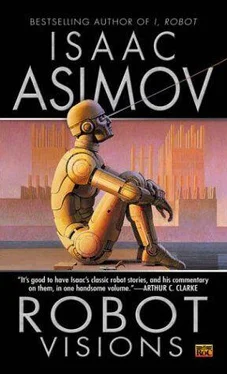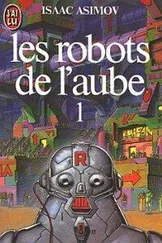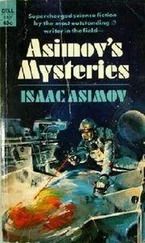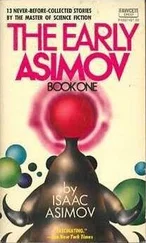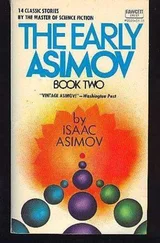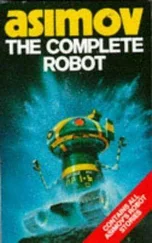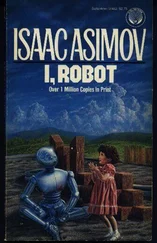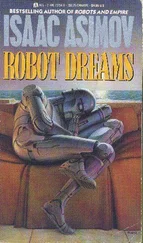Isaac Asimov - Robot Visions
Здесь есть возможность читать онлайн «Isaac Asimov - Robot Visions» весь текст электронной книги совершенно бесплатно (целиком полную версию без сокращений). В некоторых случаях можно слушать аудио, скачать через торрент в формате fb2 и присутствует краткое содержание. Жанр: Фантастика и фэнтези, на английском языке. Описание произведения, (предисловие) а так же отзывы посетителей доступны на портале библиотеки ЛибКат.
- Название:Robot Visions
- Автор:
- Жанр:
- Год:неизвестен
- ISBN:нет данных
- Рейтинг книги:5 / 5. Голосов: 1
-
Избранное:Добавить в избранное
- Отзывы:
-
Ваша оценка:
- 100
- 1
- 2
- 3
- 4
- 5
Robot Visions: краткое содержание, описание и аннотация
Предлагаем к чтению аннотацию, описание, краткое содержание или предисловие (зависит от того, что написал сам автор книги «Robot Visions»). Если вы не нашли необходимую информацию о книге — напишите в комментариях, мы постараемся отыскать её.
Robot Visions — читать онлайн бесплатно полную книгу (весь текст) целиком
Ниже представлен текст книги, разбитый по страницам. Система сохранения места последней прочитанной страницы, позволяет с удобством читать онлайн бесплатно книгу «Robot Visions», без необходимости каждый раз заново искать на чём Вы остановились. Поставьте закладку, и сможете в любой момент перейти на страницу, на которой закончили чтение.
Интервал:
Закладка:
Isaac Asimov
Robot Visions
Introduction: The Robot Chronicles
What is a robot? We might define it most briefly and comprehensively as “an artificial object that resembles a human being.”
When we think of resemblance, we think of it, first, in terms of appearance. A robot looks like a human being.
It could, for instance, be covered with a soft material that resembles human skin. It could have hair, and eyes, and a voice, and all the features and appurtenances of a human being, so that it would, as far as outward appearance is concerned, be indistinguishable from a human being.
This, however, is not really essential. In fact, the robot, as it appears in science fiction, is almost always constructed of metal, and has only a stylized resemblance to a human being.
Suppose, then, we forget about appearance and consider only what it can do. We think of robots as capable of performing tasks more rapidly or more efficiently than human beings. But in that case any machine is a robot. A sewing machine can sew faster than a human being, a pneumatic drill can penetrate a hard surface faster than an unaided human being can, a television set can detect and organize radio waves as we cannot, and so on.
We must apply the term robot, then, to a machine that is more specialized than an ordinary device. A robot is a computerized machine that is capable of performing tasks of a kind that are too complex for any living mind other than that of a man, and of a kind that no non-computerized machine is capable of performing.
In other words to put it as briefly as possible:
Clearly, then, a true robot was impossible before the invention of the computer in the 1940s, and was not practical (in the sense of being compact enough and cheap enough to be put to everyday use) until the invention of the microchip in the 19708.
Nevertheless, the concept of the robot-an artificial device that mimics the actions and, possibly, the appearance of a human being-is old, probably as old as the human imagination.
The ancients, lacking computers, had to think of some other way of instilling quasi-human abilities into artificial objects, and they made use of vague supernatural forces and depended on god-like abilities beyond the reach of mere men.
Thus, in the eighteenth book of Homer’s Iliad, Hephaistos, the Greek god of the forge, is described as having for helpers, “a couple of maids…made of gold exactly like living girls; they have sense in their heads, they can speak and use their muscles, they can spin and weave and do their work…” Surely, these are robots.
Again, the island of Crete, at the time of its greatest power, was supposed to possess a bronze giant named Talos that ceaselessly patrolled its shores to fight off the approach of any enemy.
Throughout ancient and medieval times, learned men were supposed to have created artificially living things through the secret arts they had learned or uncovered-arts by which they made use of the powers of the divine or the demonic.
The medieval robot-story that is most familiar to us today is that of Rabbi Loew of sixteenth-century Prague. He is supposed to have formed an artificial human being-a robot-out of clay, just as God had formed Adam out of clay. A clay object, however much it might resemble a human being, is “an unformed substance” (the Hebrew word for it is “golem”), since it lacks the attributes of life. Rabbi Loew, however, gave his golem the attributes of life by making use of the sacred name of God, and set the robot to work protecting the lives of Jews against their persecutors.
There was, however, always a certain nervousness about human beings involving themselves with knowledge that properly belongs to gods or demons. There was the feeling that this was dangerous, that the forces might escape human control. This attitude is most familiar to us in the legend of the “sorcerer’s apprentice,” the young fellow who knew enough magic to start a process going but not enough to stop it when it had outlived its usefulness.
The ancients were intelligent enough to see this possibility and be frightened by it. In the Hebrew myth of Adam and Eve, the sin they commit is that of gaining knowledge (eating of the fruit of the tree of knowledge of good and evil; i.e., knowledge of everything) and for that they were ejected from Eden and, according to Christian theologians, infected all of humanity with that “original sin.”
In the Greek myths, it was the Titan, or Prometheus, who supplied fire (and therefore technology) to human beings and for that he was dreadfully punished by the infuriated Zeus, who was the chief god.
In early modern times, mechanical clocks were perfected, and the small mechanisms that ran them (“clockwork”)-the springs, gears, escapements, ratchets, and so on-could also be used to run other devices.
The 1700s was the golden age of “automatons.” These were devices that could, given a source of power such as a wound spring or compressed air, carry out a complicated series of activities. Toy soldiers were built that would march; toy ducks that would quack, bathe, drink water, eat grain and void it; toy boys that could dip a pen into ink and write a letter (always the same letter, of course). Such automata were put on display and proved extremely popular (and, sometimes, profitable to the owners).
It was a dead-end sort of thing, of course, but it kept alive the thought of mechanical devices that might do more than clockwork tricks, that might be more nearly alive.
What’s more, science was advancing rapidly, and in 1798, the Italian anatomist, Luigi Galvani, found that under the influence of an electric spark, dead muscles could be made to twitch and contract as though they were alive. Was it possible that electricity was the secret of life?
The thought naturally arose that artificial life could be brought into being by strictly scientific principles rather than by reliance on gods or demons. This thought led to a book that some people consider the first piece of modern science fiction-Frankenstein by Mary Shelley, published in 1818.
In this book, Victor Frankenstein, an anatomist, collects fragments of freshly dead bodies and, by the use of new scientific discoveries (not specified in the book), brings the whole to life, creating something that is referred to only as the “Monster” in the book. (In the movie, the life principle was electricity.)
However, the switch from the supernatural to science did not eliminate the fear of the danger inherent in knowledge. In the medieval legend of Rabbi Loew’s golem, that monster went out of control and the rabbi had to withdraw the divine name and destroy him. In the modern tale of Frankenstein, the hero was not so lucky. He abandoned the Monster in fear, and the Monster, with an anger that the book all but justifies, in revenge killed those Frankenstein loved and, eventually, Frankenstein himself.
This proved a central theme in the science fiction stories that have appeared since Frankenstein. The creation of robots was looked upon as the prime example of the overweening arrogance of humanity, of its attempt to take on, through misdirected science, the mantle of the divine. The creation of human life, with a soul, was the sole prerogative of God. For a human being to attempt such a creation was to produce a soulless travesty that inevitably became as dangerous as the golem and as the Monster. The fashioning of a robot was, therefore, its own eventual punishment, and the lesson, “there are some things that humanity is not meant to know,” was preached over and over again.
No one used the word “robot,” however, until 1920 (the year, coincidentally, in which I was born). In that year, a Czech playwright, Karel Capek, wrote the play R.U.R., about an Englishman, Rossum, who manufactured artificial human beings in quantity. These were intended to do the arduous labor of the world so that real human beings could live lives of leisure and comfort.
Читать дальшеИнтервал:
Закладка:
Похожие книги на «Robot Visions»
Представляем Вашему вниманию похожие книги на «Robot Visions» списком для выбора. Мы отобрали схожую по названию и смыслу литературу в надежде предоставить читателям больше вариантов отыскать новые, интересные, ещё непрочитанные произведения.
Обсуждение, отзывы о книге «Robot Visions» и просто собственные мнения читателей. Оставьте ваши комментарии, напишите, что Вы думаете о произведении, его смысле или главных героях. Укажите что конкретно понравилось, а что нет, и почему Вы так считаете.
